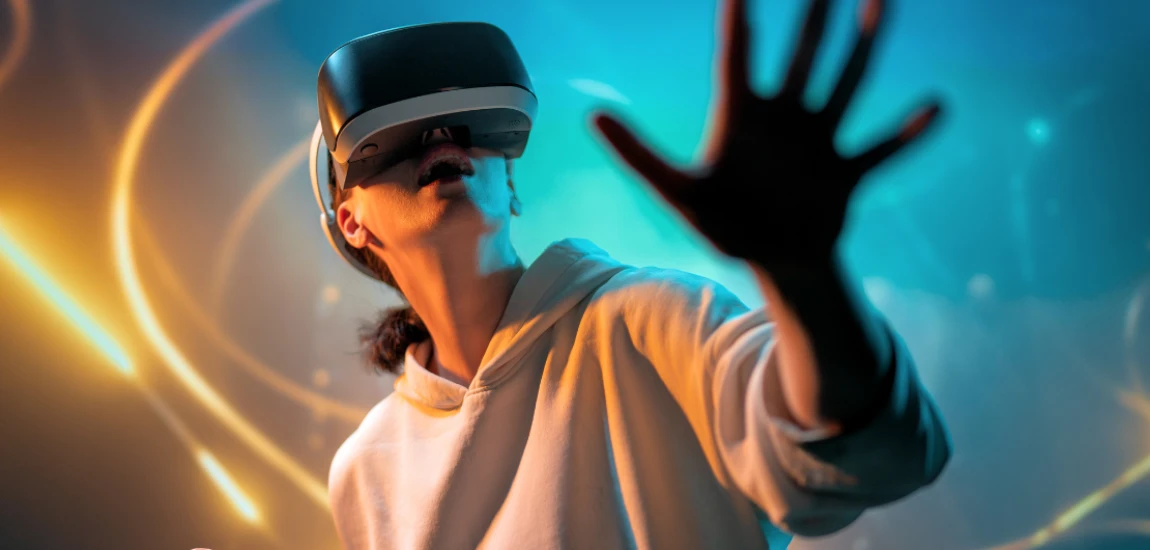Blurred Realities: AR Layers as the New Narrative Canvas

Storytelling has always evolved with technology—from oral traditions to print, cinema, television, and the internet. Today, we are entering another shift: augmented reality (AR) is emerging as a new narrative canvas where digital layers blur with physical reality. Unlike traditional media, AR doesn’t just tell stories—it embeds them in our environments, turning ordinary spaces into interactive, narrative-rich landscapes.
Whether it’s immersive art exhibitions, AR-enhanced classrooms, or branded experiences in retail stores, AR layers offer new ways to experience and co-create stories. These layers are not just visual effects; they’re portals into parallel realities that coexist with our own. As technology advances, creators, educators, and brands are discovering that AR is more than a tool—it’s a stage, a page, and a screen rolled into one.
In this blog, we’ll explore how AR layers are shaping storytelling across multiple domains, why they matter, and what the future holds for this hybrid medium.
AR Layers as Narrative Tools

At its core, AR adds a digital layer of meaning to physical spaces, creating context-rich narratives that interact with users in real time.
Beyond Screens and Pages
Unlike films or books, AR storytelling doesn’t confine audiences to a screen. Instead, it overlays stories onto real-world spaces. A city street can transform into a battlefield for a game, or a museum gallery can whisper stories of its artifacts. The narrative canvas expands beyond media into lived environments.
Interactivity as Storytelling
AR’s power lies in interactivity. Users are not passive viewers but active participants. By tapping, swiping, or moving through physical spaces, they shape their own narrative pathways. For example, an AR-enhanced novel might allow readers to “unlock” hidden chapters by pointing their phone at physical locations tied to the story.
Emotional Immersion
Because AR stories are experienced in familiar environments, they feel personal. The blend of physical and digital blurs the line between fiction and reality, creating emotional immersion. A horror story that unfolds in your living room feels more haunting than one on a screen.
AR in Entertainment and Pop Culture

Entertainment industries are already experimenting with AR as a narrative medium, expanding storytelling across music, film, and gaming.
Music and Performance Art
Musicians are using AR to layer digital performances onto live shows. Fans can point their phones at the stage and see holographic dancers, or access behind-the-scenes stories via AR-enhanced posters. Artists like Travis Scott and BTS have experimented with AR concerts, blending physical and digital fandom experiences.
Expanding Film Universes
Film studios use AR to extend stories beyond the theater. AR posters unlock trailers, characters appear in fans’ homes for interactive promotions, and cinematic worlds expand into mobile AR games. This strategy strengthens fan engagement while blurring the line between marketing and storytelling.
Gaming and Everyday Worlds
AR gaming has shown the potential of narrative immersion in daily life. Pokémon Go demonstrated how AR layers can overlay entire story ecosystems onto real environments, making cities part of the narrative. Future AR games will likely build on this foundation, creating stories that unfold over weeks or months in the physical spaces we inhabit.
AR in Education and Learning

AR is also reshaping how we learn, offering new ways to turn abstract concepts into immersive experiences.
History in 3D
Instead of reading about ancient civilizations, students can walk through AR reconstructions of lost cities. Archaeological sites or history textbooks can be enhanced with AR layers, bringing the past to life in a tangible, interactive way. This makes learning both engaging and memorable.
Science Made Visible
AR layers allow complex scientific concepts to be visualized. Imagine a biology lesson where the human heart beats in 3D on a classroom desk, or chemistry where molecular reactions unfold as interactive animations. By making the invisible visible, AR strengthens comprehension and curiosity.
Personalized Learning Pathways
AR storytelling also allows for adaptive learning. Students can progress through AR-enhanced lessons at their own pace, unlocking new layers of narrative as they master topics. This combination of gamification and storytelling ensures higher engagement and long-term retention.
AR in Art and Cultural Heritage

For artists and cultural institutions, AR provides a new way to tell stories about creativity, identity, and heritage.
AR as a Medium for Artists
Contemporary artists are treating AR as a creative canvas, layering virtual sculptures or animations onto physical spaces. These artworks exist in a hybrid state—part tangible, part digital—and require audiences to engage with both realities simultaneously.
Preserving Heritage Through AR
Museums and historical sites are using AR to bring artifacts to life. Instead of static displays, visitors can view objects in their original contexts, watch reconstructions of historical events, or interact with digital guides. This not only deepens engagement but also broadens accessibility for global audiences.
Democratizing Access to Art
AR also breaks down barriers by bringing art outside traditional institutions. Street murals enhanced with AR animations, virtual galleries accessible via QR codes, or interactive exhibits at public landmarks allow culture to reach audiences who might never visit a museum.
AR in Marketing and Brand Storytelling

Brands are rapidly adopting AR as a storytelling tool to deepen customer engagement and loyalty.
Interactive Advertising
AR ads transform passive consumption into interactive experiences. A sneaker brand might let customers virtually try on shoes, while an AR beverage campaign could turn bottles into portals for animated mini-films. These experiences embed stories directly into products.
Location-Based Brand Narratives
AR layers tied to physical spaces create opportunities for location-based storytelling. For example, a coffee chain could gamify its stores by embedding narratives customers unlock with each visit, creating both loyalty and intrigue.
The Future of Branded Storytelling
As AR hardware becomes more widespread—through smart glasses or AR headsets—brands will integrate narrative layers seamlessly into everyday life. Storytelling will no longer be a separate experience; it will be embedded in the objects, places, and interactions that define daily routines.
Challenges and the Future of AR Storytelling

While AR layers hold immense promise, they also raise challenges around ethics, accessibility, and sustainability.
Privacy and Data Concerns
AR storytelling often relies on location data, camera access, and behavioral tracking. Without safeguards, these features can compromise user privacy. Future AR platforms must prioritize transparent consent and ethical data practices to build trust.
Accessibility and Digital Divides
Not everyone has equal access to AR-enabled devices or high-speed internet. To truly democratize AR storytelling, creators must design for inclusivity—ensuring experiences work across affordable devices and are accessible to users with disabilities.
Future Directions of AR Narratives
Looking ahead, AR storytelling will evolve with new hardware like AR glasses, haptic devices, and 5G networks. This will enable persistent AR worlds layered over reality, where narratives unfold continuously rather than through isolated experiences. The future may hold an “AR multiverse” of overlapping stories, each enriching the way we perceive and interact with our environments.




